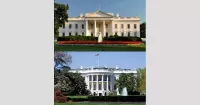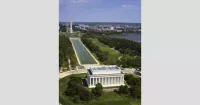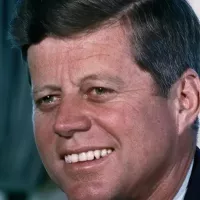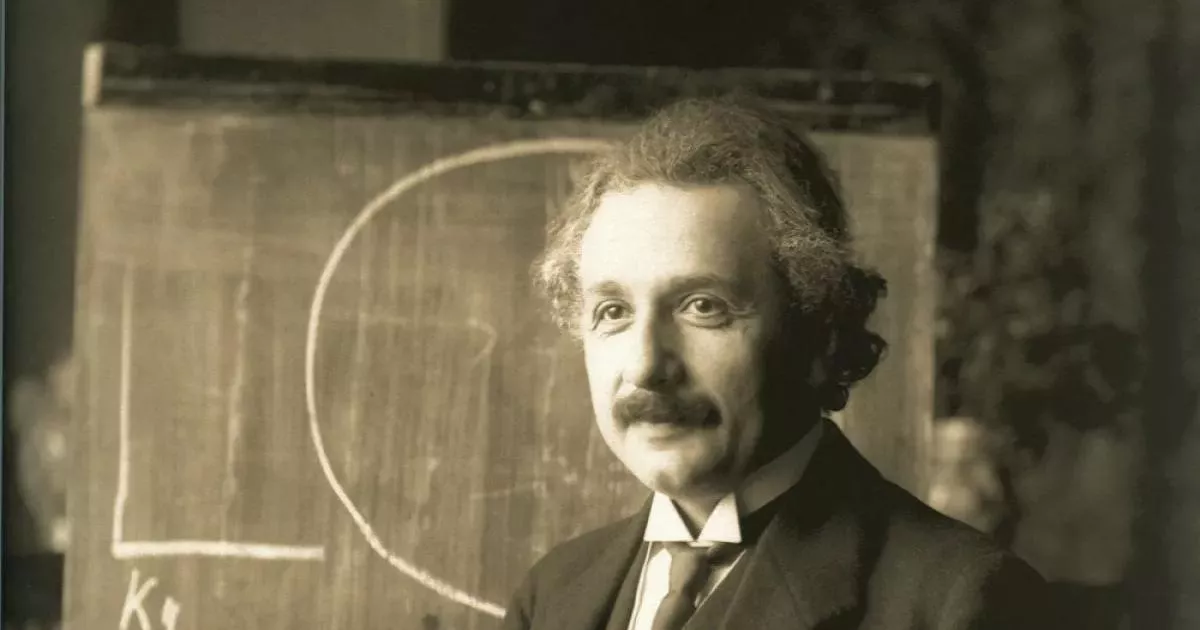Discover the defining moments in the early life of Albert Einstein. From birth to education, explore key events.
Albert Einstein (1879-1955) was a German-born theoretical physicist renowned for his theory of relativity. This included the famous mass-energy equivalence formula, E=mc². He also significantly contributed to the development of quantum mechanics and received the 1921 Nobel Prize in Physics for his explanation of the photoelectric effect. His work revolutionized our understanding of gravity, space, time, and the universe. Einstein is widely considered one of the most influential scientists of the 20th century.
1900: Graduation from Swiss Federal Polytechnic School
In 1900, Einstein graduated from the Swiss federal polytechnic school in Zurich with a mathematics and physics teaching diploma.
February 1901: Swiss Citizenship and Military Unfitness
In February 1901, Einstein's acquisition of Swiss citizenship was not followed by conscription as he was deemed medically unfit for military service.
1902: Formation of the Olympia Academy
In 1902, Einstein and friends formed a group called the Olympia Academy to discuss science and philosophy.
1902: Birth of Lieserl Einstein
In early 1902, Mileva Marić gave birth to a daughter, Lieserl, while visiting her parents in Novi Sad.
January 1903: Marriage to Mileva Marić
In January 1903, Albert Einstein married Mileva Marić.
September 1903: Fate of Lieserl
In September 1903, a letter written by Einstein suggests that his daughter Lieserl, born in early 1902 to Mileva Marić, was either given up for adoption or died of scarlet fever in infancy.
May 1904: Birth of Hans Albert
In May 1904, Einstein's son Hans Albert was born in Bern, Switzerland.
April 1905: Completion of Doctoral Dissertation
On 30 April 1905, Einstein completed his doctoral dissertation, "Eine neue Bestimmung der Moleküldimensionen", which was later approved by Professor Alfred Kleiner.
1905: PhD Dissertation to the University of Zurich
In 1905, Einstein submitted a successful PhD dissertation to the University of Zurich.
January 1906: Awarded PhD
On 15 January 1906, Einstein was formally awarded his PhD.
1908: Privatdozent at the University of Bern
In 1908, Einstein became a Privatdozent at the University of Bern.
1908: Junior Teaching Position at University of Bern
In 1908, Einstein secured a junior teaching position at the University of Bern.
1909: Lecture at University of Zurich
In 1909, Einstein gave a lecture on relativistic electrodynamics at the University of Zurich, which led to him being offered an associate professorship.
July 1910: Birth of Eduard
In July 1910, Einstein's son Eduard was born in Zurich.
April 1911: Professorship in Prague
In April 1911, Einstein accepted a chair at the German Charles-Ferdinand University in Prague, requiring him to become an Austrian citizen.
July 1912: Return to ETH Zurich
In July 1912, Einstein returned to his alma mater, the ETH Zurich, to take up a chair in theoretical physics.
1912: Start of Correspondence
From 1912, Einstein wrote daily to his wife Elsa and stepdaughters Margot and Ilse.
April 1914: Marić Returns to Zurich
In April 1914, soon after moving to Berlin, Mileva Marić learned of Einstein's infidelity and returned to Zurich with their sons, Hans Albert and Eduard.
April 1914: Move to Berlin Apartment
On 1 April 1914, Einstein moved into an apartment in the Berlin district of Dahlem after joining the Prussian Academy of Sciences.
October 1914: Signing of Manifesto to the Europeans
In October 1914, Einstein distanced himself from the "Manifesto of the Ninety-Three" and signed the alternative "Manifesto to the Europeans".
1918: Einstein Signatory of German Democratic Party Proclamation
In 1918, Albert Einstein was one of the signatories of the founding proclamation of the German Democratic Party, a liberal party.
February 1919: Divorce from Mileva Marić
On 14 February 1919, Einstein and Mileva Marić were granted a divorce on the grounds of having lived apart for five years.
1919: Marriage to Elsa Löwenthal
In 1919, Einstein married Elsa Löwenthal.
April 1921: Arrival in America
On April 2, 1921, Einstein arrived in America, marking the start of his new life as an intellectual icon. He was welcomed to New York City by Mayor John Francis Hylan and spent three weeks giving lectures and attending receptions at Columbia University, Princeton, and the White House.
July 1921: Publication of Essay on America
In July 1921, Einstein published an essay, "My First Impression of the U.S.A.", where he sketched the American character, praising the joyous, positive attitude to life, friendliness, self-confidence, optimism, and lack of envy he observed in Americans.
1921: Einstein Asked to Raise Funds for Hebrew University
In 1921, Albert Einstein was asked by Chaim Weizmann to help raise funds for the planned Hebrew University of Jerusalem. He suggested establishing institutes for agriculture, chemistry, and microbiology, and promoted an Oriental Studies Institute.
1922: Appointment to League of Nations Committee
From 1922, Einstein became a member of the Geneva-based International Committee on Intellectual Cooperation of the League of Nations, aimed at encouraging collaboration among scientists, artists and scholars from different countries.
1922: Nobel Prize Ceremony Absence
In 1922, Einstein's tour of the eastern hemisphere prevented him from attending the Nobel Prize ceremony in Stockholm. A German diplomat accepted the prize on his behalf and gave a speech praising Einstein's contributions to physics and his advocacy for peace.
1923: Participation in League of Nations Committee
In 1923, Einstein actively participated in the International Committee on Intellectual Cooperation of the League of Nations, fostering collaboration among international intellectuals.
1923: Membership in Spanish Academy of Sciences
In 1923, during a two-week visit to Spain, Einstein was awarded membership in the Spanish Academy of Sciences, signified by a diploma presented to him by King Alfonso XIII. He also met fellow Nobel laureate Santiago Ramón y Cajal during the trip.
1924: Participation in League of Nations Committee
In 1924, Einstein actively participated in the International Committee on Intellectual Cooperation of the League of Nations, fostering collaboration among international intellectuals.
April 1925: Visit to South America
In April 1925, Einstein and his wife visited South America, spending approximately one week in Brazil, one week in Uruguay, and one month in Argentina. The tour was financially supported by the Council of the University of Buenos Aires and the Asociación Hebraica Argentina.
1925: Einstein Criticizes Bolsheviks
In 1925, Albert Einstein criticized the Bolsheviks for not having a "well-regulated system of government" and called their rule a "regime of terror and a tragedy in human history".
1925: Opening of the Hebrew University of Jerusalem
In 1925, the Hebrew University of Jerusalem opened, with Albert Einstein as a figurehead leader in its establishment.
1929: Einstein's Remark on Vladimir Lenin
In 1929, Albert Einstein expressed a more moderated view of Vladimir Lenin and the Bolsheviks, praising them while still criticizing their methods.
1929: Discovery of the Recession of Galaxies by Hubble
In 1929, Edwin Hubble discovered the recession of the galaxies which led Einstein to abandon his static model of the universe.
December 1930: Research Fellowship at Caltech
In December 1930, Einstein began a two-month research fellowship at the California Institute of Technology (Caltech). He declined invitations to receive prizes or make speeches, seeking to minimize media attention compared to his 1921 visit to the US.
1930: Einstein expresses sympathy for vegetarianism
In 1930, Albert Einstein wrote a letter to Hermann Huth, vice-president of the German Vegetarian Federation, expressing his sympathy toward vegetarianism.
September 1931: Einstein Corresponds with Mahatma Gandhi
On September 27, 1931, Wilfrid Israel took V. A. Sundaram, Gandhi's disciple, to meet Albert Einstein in Caputh. Einstein wrote a short letter to Gandhi, beginning their correspondence.
1931: Einstein Plays with Zoellner Quartet
In 1931, while doing research at the California Institute of Technology, Albert Einstein visited the Zoellner family conservatory in Los Angeles and played Beethoven and Mozart's works with members of the Zoellner Quartet.
1932: End of League of Nations Committee Membership
In 1932, Einstein concluded his ten-year membership of the International Committee on Intellectual Cooperation of the League of Nations.
1932: FBI Creates Secret Dossier on Einstein
In 1932, the FBI created a secret dossier on Albert Einstein, which grew to 1,427 pages by the time of his death.
February 1933: Decision Not to Return to Germany
In February 1933, while visiting the United States, Einstein decided he could not return to Germany due to the rise of the Nazis under Adolf Hitler.
March 1933: Resignation from Prussian Academy
In March 1933, Einstein resigned from the Prussian Academy, marking the end of a period where he completed the general theory of relativity, proved the Einstein–de Haas effect, contributed to quantum theory of radiation, and developed Bose–Einstein statistics.
March 1933: Gestapo Raids and Renunciation of Citizenship
In March 1933, the Gestapo repeatedly raided Einstein's family's apartment in Berlin. Learning of the Enabling Act and unable to return to Berlin, Einstein surrendered his passport at the German consulate in Antwerp, Belgium, formally renouncing his German citizenship on March 28, 1933. The Nazis later confiscated and sold his boat and converted his cottage into a Hitler Youth camp.
April 1933: Jewish Scientists Barred from Official Positions
In April 1933, Einstein learned that the new German government had passed laws barring Jews from holding official positions, including teaching at universities, leading to the dismissal of thousands of Jewish scientists.
April 1933: Aided by Academic Assistance Council
In April 1933, Einstein was aided by the Academic Assistance Council, founded by William Beveridge, to help academics escape Nazi persecution, facilitating his departure from Germany.
June 1933: Short Stay at Christ Church, Oxford
Until June 1933, Einstein stayed for three short periods at Christ Church, Oxford, where he was offered a five-year research fellowship.
July 1933: Visit to England and Protection
In late July 1933, Einstein visited England for about six weeks at the invitation of Commander Oliver Locker-Lampson, staying in a secluded wooden cabin on Roughton Heath in Norfolk. Locker-Lampson provided bodyguards for Einstein's protection, which was publicized in the Daily Herald on July 24, 1933.
September 1933: Request for Placement of German-Jewish Scientists
In September 1933, Einstein contacted Turkey's Prime Minister, İsmet İnönü, requesting the placement of unemployed German-Jewish scientists, leading to the rescue of over 1,000 individuals.
October 1933: Speech on Academic Freedom and Position at IAS
On October 3, 1933, Einstein delivered a speech on academic freedom at the Royal Albert Hall in London. Four days later, he returned to the US and took up a position at the Institute for Advanced Study, a refuge for scientists fleeing Nazi Germany.
1933: Emigration to the United States with Elsa
In 1933, Einstein emigrated to the United States with Elsa Löwenthal.
1933: Decision to remain in the US
In 1933, while Einstein was visiting the United States, Adolf Hitler came to power in Germany. Horrified by the Nazi persecution of Jews, Einstein decided to remain in the US.
1935: Permanent Residence in Princeton
From 1935, Einstein lived permanently in Princeton, where he developed a close friendship with Kurt Gödel, and unsuccessfully attempted to develop a unified field theory and refute the accepted interpretation of quantum physics.
1935: Decision to Remain in the United States
In 1935, Einstein decided to remain permanently in the United States and applied for citizenship after receiving offers from several European universities.
1935: Elsa's Health Problems
In 1935, Elsa Löwenthal was diagnosed with heart and kidney problems.
1937: Publication of Köchel catalog edition
Although erroneously credited, the 1937 edition of the Köchel catalog of Mozart's work, was prepared by Alfred Einstein, and not Albert Einstein.
1937: Einstein Offers Marian Anderson Accommodation
In 1937, Albert Einstein invited black contralto Marian Anderson to stay at his home in Princeton after the Nassau Inn refused her a room due to her race. She stayed with him whenever she returned to Princeton, up until two months before his death.
July 1939: Einstein Supports Nuclear Weapons Research
In July 1939, Leó Szilárd and Eugene Wigner visited Albert Einstein to discuss the possibility of atomic bombs, an idea Einstein, a pacifist, had not considered. They requested Einstein's support in writing a letter with Szilárd to President Roosevelt, urging the U.S. to pay attention to nuclear weapons research and engage in its own research.
1940: Einstein becomes an American citizen
In 1940, Albert Einstein became an American citizen. He expressed appreciation for the meritocracy and freedom of thought in American culture, which he felt fostered creativity.
1940: American Citizenship
In 1940, Einstein was granted American citizenship.
1946: Einstein Visits Lincoln University
In 1946, Albert Einstein visited Lincoln University, a historically black college in Pennsylvania, where he was awarded an honorary degree and gave a speech about racism in America.
1948: Einstein's Aneurysm Reinforced
In 1948, Albert Einstein's abdominal aortic aneurysm was surgically reinforced by Rudolph Nissen.
1948: Establishment of the State of Israel
In 1948, the state of Israel was established without Albert Einstein's help, with him playing only a minor role in the Zionist movement due to his opposition to a Jewish state.
1951: Einstein offers to testify for W. E. B. Du Bois
In 1951, Albert Einstein offered to be a character witness for civil rights activist W. E. B. Du Bois, who was facing trial as an alleged foreign agent. The judge dropped the case after Einstein's offer.
November 1952: Einstein Offered Presidency of Israel
In November 1952, Prime Minister David Ben-Gurion offered Albert Einstein the largely ceremonial position of President of Israel following Weizmann's death. Einstein declined, expressing he was "deeply moved" but unable to accept.
January 1954: Einstein's Letter to Eric Gutkind
In a German-language letter to philosopher Eric Gutkind, dated 3 January 1954, Albert Einstein wrote about his views.
March 1954: Einstein Writes About Vegetarianism
In March 1954, Albert Einstein wrote in a letter about his vegetarian diet, stating he was living without fats, meat, or fish and feeling well, suggesting humans were not born to be carnivores.
1954: Einstein regrets signing letter to Roosevelt
In 1954, Albert Einstein told his friend, Linus Pauling, that he regretted signing the letter to President Roosevelt recommending the creation of atom bombs, but justified it due to the danger of Germany developing them first.
April 1955: Einstein Suffers Internal Bleeding
On April 17, 1955, Albert Einstein experienced internal bleeding from a ruptured abdominal aortic aneurysm. He was working on a speech for Israel's seventh anniversary at the time.
1955: Einstein signs manifesto highlighting danger of nuclear weapons
In 1955, Albert Einstein, along with Bertrand Russell and other intellectuals and scientists, signed a manifesto emphasizing the danger of nuclear weapons.
1955: End of Correspondence
Until 1955, Einstein wrote daily to his wife Elsa and stepdaughters Margot and Ilse.
1987: Discovery of Correspondence
In 1987, correspondence between Einstein and Marić was discovered and published, revealing information about their daughter Lieserl.
2015: Right of Publicity Lawsuit
In 2015, Einstein's right of publicity was litigated in a federal district court in California, with the Hebrew University of Jerusalem as the exclusive representative. The claims were ultimately settled.
Mentioned in this timeline

The White House located at Pennsylvania Avenue NW in Washington...
California is a U S state on the Pacific Coast...
India officially the Republic of India is a South Asian...
New Zealand is an island country located in the southwestern...

Washington D C is the capital city and federal district...
Germany officially the Federal Republic of Germany is a Western...
Trending
1 month ago India-Bangladesh Ties Strained as Hasina Faces Potential Execution; Extradition Unlikely.
1 month ago Tesla Approved to Launch Autonomous Rideshare Service in Arizona: A New Era
Jaden McDaniels is an American professional basketball player currently playing for the Minnesota Timberwolves in the NBA He played college...

9 months ago Dire Wolf's potential return clashes with Trump's endangered species policy; de-extinction questioned.

28 days ago Trump Pardons Gobble and Waddle: A Thanksgiving Tradition Continues with Presidential Humor.

1 month ago Peyton Watson's Opportunity: Millions on Nuggets Roster and Denver Breakout Potential.
Popular

Ben Shapiro is a prominent American conservative political commentator media...

XXXTentacion born Jahseh Dwayne Ricardo Onfroy was a controversial yet...

Candace Owens is an American conservative political commentator and author...

William Franklin Graham III commonly known as Franklin Graham is...
The Kennedy Center Honors are annual awards recognizing individuals and...

John F Kennedy JFK was the th U S President...
